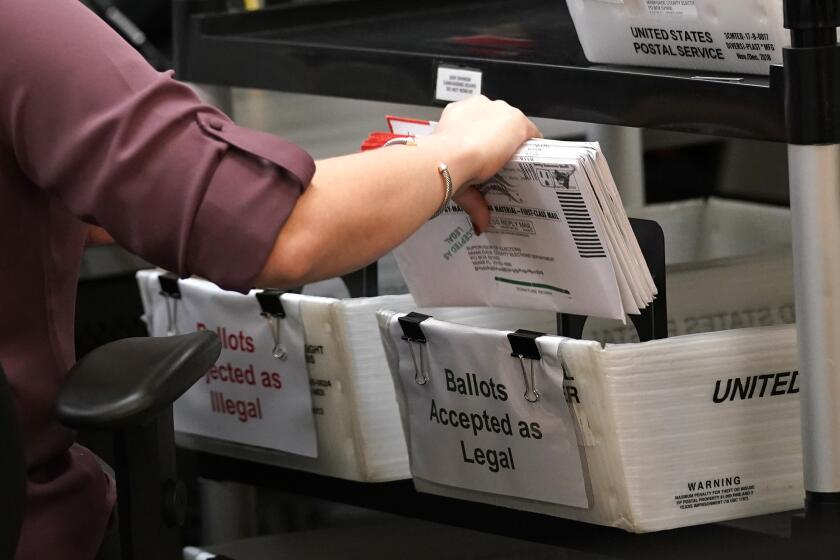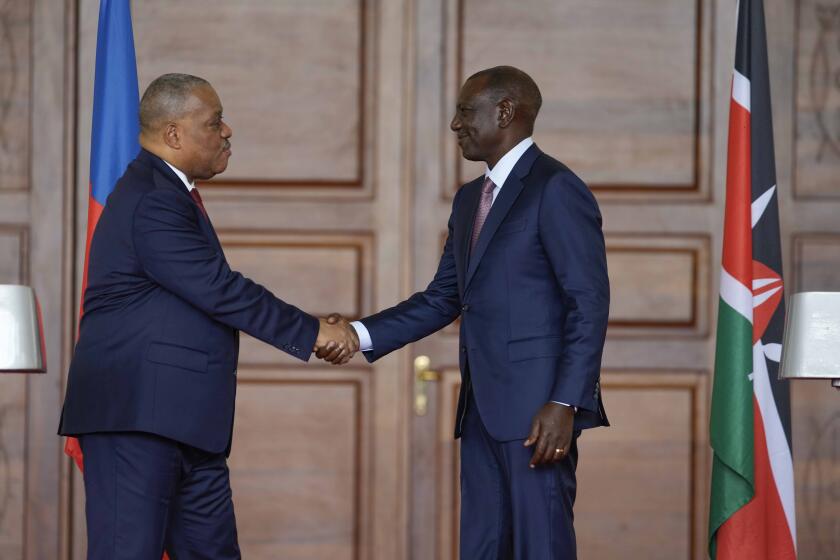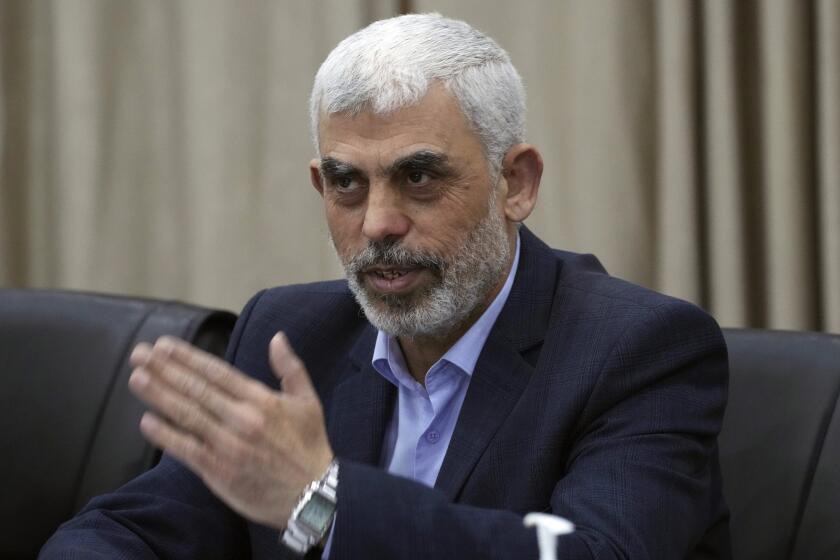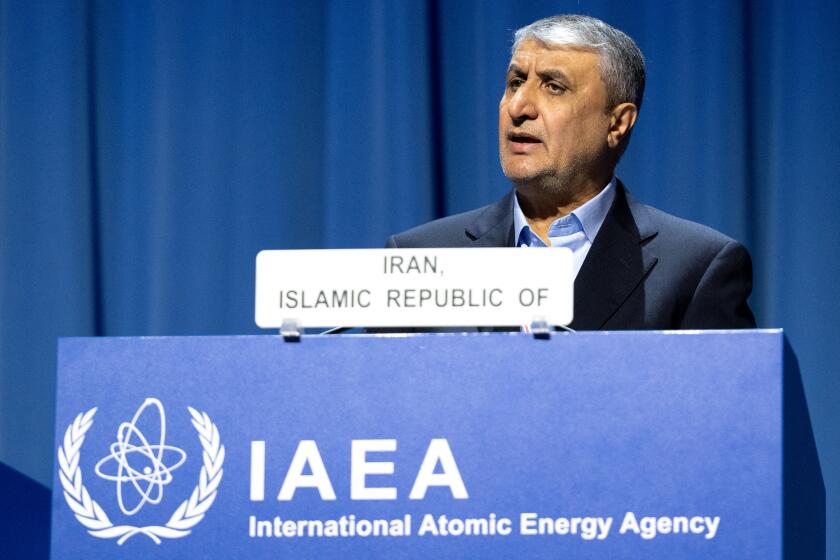Regional Outlook : Latin Skepticism Grows Over Bush’s Trade Plan : * The President’s Enterprise for the Americas Initiative will soon be a year old. It seems to be going nowhere fast.
It’s kind of a wild idea, really: a hemispheric free-trade zone from Anchorage, Alaska, to Tierra del Fuego at the tip of South America that would open up an enormous field for U.S. capitalism and bring Latin America into the richest marketplace on Earth.
On June 27, it will be a year since President Bush announced his Enterprise for the Americas Initiative. Latin American countries, perhaps in the mood for a wild idea and apparently forgetful of past concerns about “Yankee imperialism,” have welcomed Bush’s initiative with enthusiasm.
Now comes the hard part, the long and uncertain journey from idea to reality.
Last week, U.S. officials at a meeting in Chile of the Organization of American States re-emphasized the President’s commitment to the initiative. And one after another, Latin American foreign ministers voiced their approval of Bush’s initiative.
But there are shadows of skepticism in the region--an undercurrent of concern about delays in translating the initiative into concrete proposals and action.
The idea started out incomplete, observed Marcos de Azambuja, deputy foreign minister of Brazil. “It was just an outline of a program; it was not itself a program,” Azambuja said in an interview. “Since then, not so much was done to give it bone or muscle.”
Attention was distracted by the Persian Gulf crisis. Latin American countries took their time assuming a role in the initiative. “We kept the ball on the U.S. side of the court exclusively,” Azambuja said.
“The key problem of implementation remains,” said Foreign Minister Diego Cordovez of Ecuador. “The United States has to live up to its promises.” If it doesn’t, “there will be increased frustration and disappointment, and that will be bad,” he added.
Bush’s initiative is divided into three areas: trade, investment and debt. The most ambitious part by far is in trade--the idea of removing all customs duties and other barriers to make the Americas a single marketplace.
That, in turn, could encourage a surge of U.S. private investment in Latin America and the Caribbean. The United States also is urging countries of the region to streamline investment laws and impose order in their national economies to attract capital.
The Bush Administration proposed the creation of a special fund in the Inter-American Development Bank that would be used to help countries make investment policy reforms. The Administration is asking Congress to authorize $500 million for the fund over the next five years and is hoping other developed countries will contribute an additional $1 billion.
Some Latin American and Caribbean officials contend that those amounts don’t do justice to the huge scope of Bush’s plan. “The official investment money is very small so far,” commented Clement Maynard, deputy prime minister and foreign minister of the Bahamas.
The Bush Administration has also offered to forgive some of the debts owed to the U.S. government by hemispheric countries, or to help convert unpaid debt into funds for environmental projects. But the initiative does not offer any direct relief from private foreign debt.
While official debt to the United States is an important part of the total foreign debts of some of the poorest countries in the region, better-off countries are far more deeply indebted to private foreign banks. Of Latin America’s total foreign debt of $430 billion, only about $12 billion is owed to the U.S. government.
Some officials say that by offering relief from some official U.S. debt, Bush’s initiative will set an important precedent for more generalized debt relief. But others say the Enterprise for the Americas Initiative should deal more directly with private debt, perhaps by making it easier for American banks to write off loans to Latin America.
“The enterprise must respond effectively to the region’s problems and concerns if it is to gain the confidence of the members of the Americas,” the Bahamas’ Maynard said.
Deputy Secretary of State Lawrence S. Eagleburger and Luigi R. Einaudi, the U.S. ambassador to the Organization of American States, were the American officials in charge of talking up the Bush initiative at the OAS. Eagleburger vowed that the Administration will fight hard against U.S. unions and others who oppose a planned free trade agreement with Mexico.
“We will succeed in creating, along with Canada, the largest free market the world has ever seen,” he told OAS delegates. “But that is only the beginning. President Bush foresees an entire American community of free-trading nations, from Alaska to Argentina, which will set an example against the forces of protectionism.
“What we dream of is a community in which each nation builds on its strengths, discovers new competitive advantages and reaps the benefits of competition in the world marketplace.”
Ambassador Einaudi noted that the United States has completed preliminary “framework agreements” on trade and investment with Mexico, Bolivia, Chile, Colombia, Costa Rica, Ecuador, El Salvador, Honduras, Peru and Venezuela. He said an extension of authorization for “fast track” talks, approved by Congress in May, will enable the Administration to move ahead in talks with Mexico and Canada for a North American Free Trade Agreement.
After Mexico, talks on free trade with Chile and Venezuela are expected to begin.
In an interview, Einaudi cautioned that carrying out the Bush initiative will take years. “We’re talking about recasting fully economic relations in the hemisphere,” he said. “A great deal of what we are doing has to do with changing attitudes.”
U.S. TRADE WITH LATIN AMERICA (In billions of dollars) ARGENTINA 1990 IMPORTS: 1.2 1990 EXPORTS: 1.5 (Deficit -0.3) BOLIVIA 1990 EXPORTS: 0.1 1990 IMPORTS: 0.2 (-0.1) BRAZIL 1990 EXPORTS: 5.0 1990 IMPORTS: 7.9 (-2.9 CHILE 1990 EXPORTS: 1.7 1990 IMPORTS: 1.3 (0.4) COLOMBIA 1990 EXPORTS: 2.0 1990 IMPORTS: 3.1 (-1.1) ECUADOR 1990 EXPORTS: 0.7 1990 IMPORTS: 1.4 (-0.7) PARAGUAY 1990 EXPORTS: 0.3 1990 IMPORTS: 0.1 (0.2) PERU 1990 EXPORTS: 0.8 1990 IMPORTS: 0.8 (0) URUGUAY 1990 EXPORTS: 0.1 1990 IMPORTS: 0.2 (-0.1) VENEZUELA 1990 EXPORTS: 3.1 1990 IMPORTS: 9.5 (-6.4) Source: U.S. Department of Commerce
More to Read
Sign up for Essential California
The most important California stories and recommendations in your inbox every morning.
You may occasionally receive promotional content from the Los Angeles Times.










